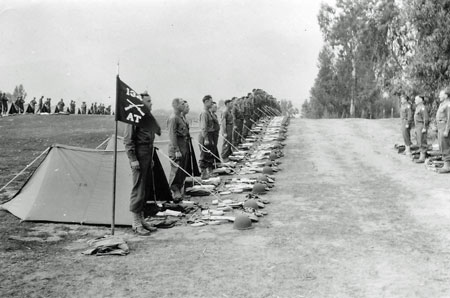The property was leased by the U.S. Army from the Ojai Valley Company in 1942. On 20 April 1944 the U.S. Navy took over the lease from the U.S. Army.
No disposal documentation was found. According to Mr. William Bowie, librarian of the Ojai Museum Library, the Navy occupied the Ojai County Club until 1946. Furthermore, a record search at the Naval Facility Engineering Command Historian Office, Port Hueneme, revealed no documentation making reference to the site after 1946. Therefore, the lease probably terminated in 1946.

- “That Sunday’s afternoon excursion for us teenagers was immediately canceled, and we all just stood in front of the church absolutely numb,” she recalls. “Within days, we were ordered to tar-paper our windows at night, and we held regular air raid drills. My mother learned to shoot a rifle.”
- “We had no blankets or tents when we got there, so we slept on the stadium benches of the fairgrounds. It was cold and damp, and a lot of guys caught the flu. It was rough…”

